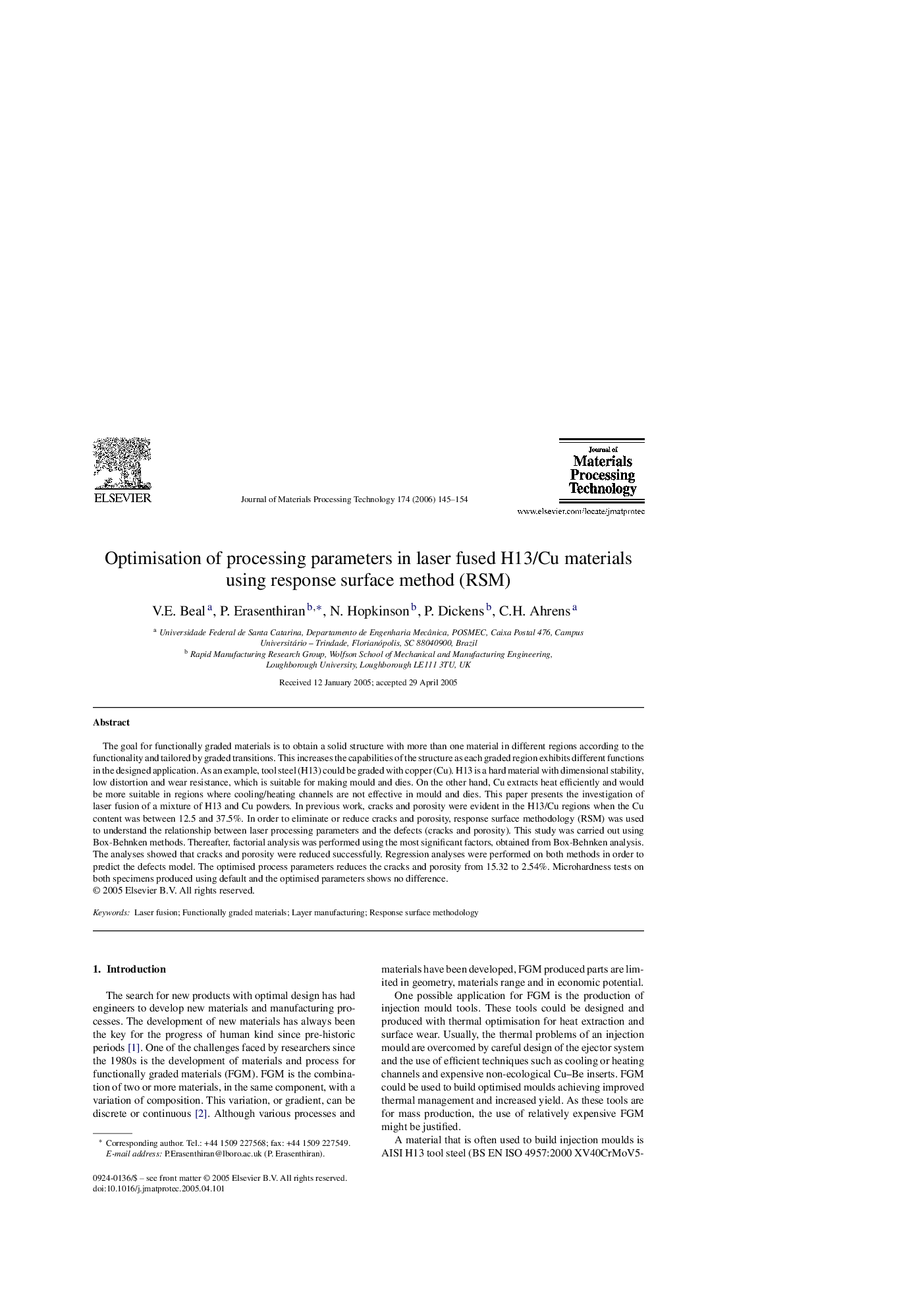| Article ID | Journal | Published Year | Pages | File Type |
|---|---|---|---|---|
| 796578 | Journal of Materials Processing Technology | 2006 | 10 Pages |
The goal for functionally graded materials is to obtain a solid structure with more than one material in different regions according to the functionality and tailored by graded transitions. This increases the capabilities of the structure as each graded region exhibits different functions in the designed application. As an example, tool steel (H13) could be graded with copper (Cu). H13 is a hard material with dimensional stability, low distortion and wear resistance, which is suitable for making mould and dies. On the other hand, Cu extracts heat efficiently and would be more suitable in regions where cooling/heating channels are not effective in mould and dies. This paper presents the investigation of laser fusion of a mixture of H13 and Cu powders. In previous work, cracks and porosity were evident in the H13/Cu regions when the Cu content was between 12.5 and 37.5%. In order to eliminate or reduce cracks and porosity, response surface methodology (RSM) was used to understand the relationship between laser processing parameters and the defects (cracks and porosity). This study was carried out using Box-Behnken methods. Thereafter, factorial analysis was performed using the most significant factors, obtained from Box-Behnken analysis. The analyses showed that cracks and porosity were reduced successfully. Regression analyses were performed on both methods in order to predict the defects model. The optimised process parameters reduces the cracks and porosity from 15.32 to 2.54%. Microhardness tests on both specimens produced using default and the optimised parameters shows no difference.
